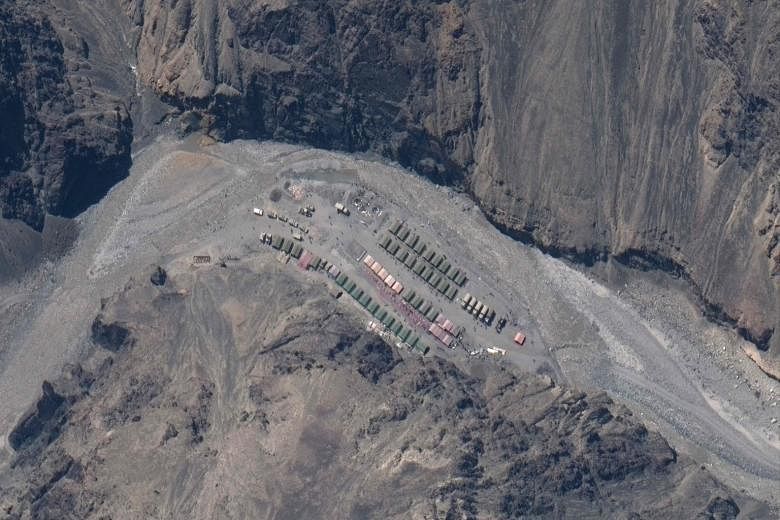NEW DELHI • China appears to have added new structures near the site of a deadly border clash with India in the western Himalayas, fresh satellite pictures show, heightening concerns about further flare-ups between the nuclear-armed neighbours.
Indian and Chinese military commanders agreed on Monday to step back from a weeks-old stand-off at several locations along their disputed border following the June 15 clash in the Galwan Valley, in which 20 Indian soldiers were killed.
The satellite images showing new construction activity in the week after the brutal combat underline the challenge of disengagement and the risk that the accord could still fall apart because of overlapping claims in the arid territory.
The pictures shot on Monday by US-based space technology firm Maxar Technologies show what appear to be extensive Chinese structures on a raised river terrace overlooking the Galwan River.
India says the area where the structures have sprung up is on its side of the poorly defined, undemarcated Line of Actual Control, or the de facto border between the two Asian giants.
China says the whole of Galwan Valley is its territory and blames Indian troops for triggering the clashes.
The new activity includes camouflaged tents or covered structures against the base of a cliff and, a short distance away, a potential new camp under construction, with walls or barricades. The camp was not seen in pictures the previous week.
Satellite data expert Nathan Ruser, from the Australian Strategic Policy Institute, said the build-up suggested that there was little sign of de-escalation.
"Satellite imagery from the Galwan Valley on June 22 shows that 'disengagement' really isn't the word that the (Indian) government should be using," he said in a post on Twitter.
Defensive barriers can be seen on the Indian side in the latest images. These were not visible in pictures taken last month.
An Indian forward post appears to be scaled back compared with images a month ago.
Both China's Foreign Ministry and India's Defence Ministry did not respond to requests for comment.
Indian military officials have previously said they will be closely monitoring the planned disengagement process and will verify it on the ground.
"There is a trust deficit so far as the Chinese are concerned," said former Indian army chief Deepak Kapoor. "So if they are telling us verbally they are ready to pull back, we will wait to see it on the ground. Until then the armed forces will be on alert."
REUTERS

